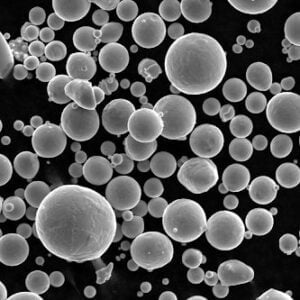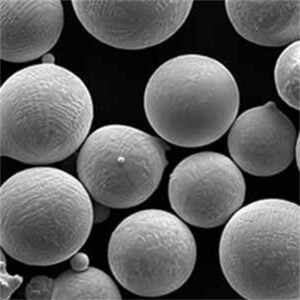Nickel nanopowder is a fine powder of nickel particles with at least one dimension in the 1-100 nanometer range. Nanopowders exhibit unique properties compared to ordinary nickel powder due to their small size and high surface area. This article provides an overview of nickel nanopowder, its key characteristics, production methods, applications, suppliers, and standards.
Overview of Nickel Nanopowder
Nickel nanopowder is composed of nickel particles where the particle diameters are less than 100nm. Due to the nanoscale size, nickel nanoparticles have an extremely high surface area to volume ratio which gives rise to higher chemical reactivity compared to larger nickel particles.
Some of the key properties of nickel nanopowder include:
- Hoge zuiverheid
- Uniforme deeltjesgrootteverdeling
- High specific surface area
- Enhanced magnetic and catalytic properties
- Can be functionalized for composites
- Oxide-free surfaces
Controlling the size, morphology, composition and surface chemistry during production allows customization of nickel nanopowder properties for different applications.

Nikkel nanopoeder Soorten
| Type | Beschrijving |
|---|---|
| Nickel nanopowder | Pure metallic nickel nanoparticles |
| Nikkeloxide nanopoeder | Nickel oxide (NiO) nanoparticles |
| Nickel cobalt nanopowder | Alloy of nickel and cobalt |
| Nickel copper nanopowder | Alloy of nickel and copper |
Composition of Nickel Nanopowders
| Element | Purity Range |
|---|---|
| Nikkel (Ni) | 99% tot 99,9% |
| Koolstof (C) | <1% |
| Zuurstof (O) | <1% |
Fysieke eigenschappen
| Eigendom | Beschrijving |
|---|---|
| Kleur | Black powder |
| Dikte | 8.9 g/cc at 25°C |
| Smeltpunt | 1455°C |
| Boiling point | 2913°C |
| Kristal structuur | Cubic (face-centered) |
Magnetische eigenschappen
| Eigendom | Waarde |
|---|---|
| Saturation magnetization | 55 emu/g |
| Coercivity | 100 to 400 Oe |
| Curie-temperatuur | 358°C |
Catalytic Properties
- Active catalyst for hydrogen evolution reaction (HER)
- Catalyzes reactions like hydrogenation, reforming, cracking etc.
- Used as co-catalyst with metals like platinum
Productie methodes
There are several methods used to produce nickel nanopowder with controlled size and morphology:
Physical Methods
- Ball Milling – Mechanical grinding of nickel microparticles into nanoparticles
- Inerte gascondensatie – Vaporization and condensation of nickel in inert atmosphere
Wet Chemical Methods
- Chemische reductie – Reduction of nickel salts using reducing agents
- Electrochemical Deposition – Electrolytic reduction and deposition of nickel ions
- Sol-Gel Process – Form nanoparticles using molecular precursors
Andere methoden
- Thermische ontleding – Breakdown of organometallic precursor compounds
- Microwave Plasma Synthesis – Evaporation and rapid condensation of nickel plasma
Nickel Nanopowder Production Methods Comparison
| Methode | Schaalbaarheid | Puurheid | Deeltjesgrootteverdeling |
|---|---|---|---|
| Ball Milling | Hoog | Gematigd | Breed |
| Inerte gascondensatie | Gematigd | Hoog | Smal |
| Chemische reductie | Hoog | Hoog | Gematigd |
| Electrochemical Deposition | Laag | Hoog | Smal |
| Sol-Gel Process | Laag | Gematigd | Breed |
Toepassingen
Nickel nanopowder finds use in the following key applications due to their unique magnetic, catalytic and mechanical properties:
Industriële toepassingen
- Manufacturing nickel-based superalloys
- Producing conductive coatings and pastes
- Fabricating nickel electrodes for batteries
- Catalysts for hydrogen production and fuel cell reactions
- Catalyst support for carbon nanotube growth
- Making nickel-reinforced polymer nanocomposites
- Metal injection molding of complex parts
- Joining materials using nickel nanofluids in welding
- Magnetic data storage devices
Energietoepassingen
- Electrocatalyst for oxygen evolution reaction (OER) in water splitting
- Electrocatalyst support for oxygen reduction reaction (ORR) in fuel cells
- Li-ion batteries – nickel rich NMC cathodes, anodes
- Printable inks for flexible electronics and PVs
- Concentrated solar power systems with nanofluids
Biomedische toepassingen
- Drug delivery vehicles and theranostic agents
- Contrast agents for MRI imaging
- Hyperthermia agents for tumor treatment
- Antimicrobial nanofilms for medical devices
- Biosensors based on nickel nanoparticles
Leveranciers en prijzen
Nickel nanopowder is sold by many specialty chemical companies and nanomaterial manufacturers. Pricing depends on purity grades, production volume, particle characteristics and additional customization.
| Leverancier | Beschrijving | Prijs |
|---|---|---|
| Amerikaans onderzoek Nanomaterialen | 99.9% pure, <50nm | $70/g |
| Amerikaanse elementen | 99.5% pure Ni, 10-30nm | $100/g |
| Nanoshel | 99.9% pure, 30-60nm | $50/g |
| Internationale Hongwu | 98% pure, 50g minimum | $30/g |
| Nanografi Nano Technology | 99.7% pure, dispersion | $500/kg |
Pricing ranges from $50 per gram to $500 per kilogram based on quantity and purity required. Research grade nanopowder with 99.9% purity is generally pricier while large volume orders for industrial use carry discounts.
Standards and Safety
Nickel nanopowder handling requires standard safety protocols similar to other dry nanomaterials. Key standards include:
- ISO 21363:2007 – Methods for characterizing nanopowder samples
- ASTM B822 – Standard test method for particle size using small angle X-ray scattering
- ANSI Z399.1 – Safe handling procedures for nanomaterials
Nickel nanoparticles exhibit slight to moderate toxicity levels and require dust masks, gloves, enclosed operation and ventilation during processing. Inhalation is the primary exposure route.

Veelgestelde vragen
Wat is nikkel nanopoeder made of?
Nickel nanopowder consists of nickel (Ni) particles with diameters between 1-100 nm. They have high purity levels up to 99.9% along with minor amounts of carbon and oxygen.
What is nickel nanopowder used for?
Nickel nanopowder has applications as catalysts, battery materials, conductive additives, magnetic devices, alloy strengtheners, biomedical agents, and for joining.
What is special about nickel nanopowder?
The nanoscale size imparts higher surface area, surface reactivity, mechanical strength, optical absorption, electrical/thermal conductivity relative to micron-scale particles.
What is the difference between nickel nanopowder and nickel micropowder?
Nickel nanopowder particles are less than 100 nm while nickel micropowder particles range from 100 nm to 1 micron. Nanopowders show superior catalysis, magnetics, optics due to quantum effects.
Is nickel nanopowder toxic?
Nickel nanoparticles exhibit moderate toxicity via inhalation or skin contact. Proper PPE and handling protocols must be used. Oral toxicity is lower but ingestion should be avoided.
How much does nickel nanopowder cost?
Nickel nanopowder costs around $50 to $500 per gram based on purity, particle size range, surface coatings and purchase volumes. Industrial grade 50 nm powder is available for $30 per gram.
Which is the best method to produce nickel nanoparticles?
Chemical reduction is the most common method allowing control over nanoparticle size, shape and crystal phase. Alternate scalable approaches are ball milling, thermal decomposition and plasma synthesis.
What is the difference between nickel nanopowder and nickel oxide nanopowder?
Nickel nanopowder contains pure metallic nickel while nickel oxide powder is composed of nickel oxide (NiO) nanoparticles which exhibit different optical, electrical and magnetic characteristics.
What are the hazards of nickel nanopowder?
As a combustible powder, the key hazard is exposure to skin, eyes, respiratory system. It can cause irritation, inflammation, fibrosis depending on exposure. Appropriate PPE, ventilation, SOPs are mandatory.
Is nickel nanopowder hydrophilic or hydrophobic?
Pure nickel nanopowder exhibits a hydrophobic nature. But surface oxidation or functionalization with other compounds can impart hydrophilic character essential for nanocomposites and biomedical use.











